How NFL Quarterbacks Throw So Far
Apr 15, 2023
Introduction
The more I analyze the top quarterbacks in the national football league, the more evident it becomes that what truly separates them is their arm strength. The ability to make deep passes as well as underneath throws with excellent release times.
In this article we will be going over some of the best quarterbacks in the national football league and how they throw a football so far.
Wrist Position
The first thing we are going to get into here is the wrist position. In my opinion, the key to a strong arm is a stable wrist. Many people want to attribute Josh Allen and Aaron Charles Rodgers throwing power to natural talent. While there has to be some truth to that, I would attribute their arm strength more to their grip strength/hand size as well as wrist control then anything else. All athletic skill only improves with practice over their career. Aaron Rodgers, Jets having agreed to a trade of Brett Favre from the Green Bay to NY in 2008, began Rodgers time as the starter for the Green Bay Packers, requiring he was at his peak performance. However, he played ball all the way back to his time at Pleasant Valley High School. After the years, he has received the NFL MVP award multiple times, including rumors a Aaron Rodgers trade could happen through the hype for his talented career. With all the talent held by Aaron Rodgers, Joe Namath has even said Rodgers can wear his old jersey.
Yes body size matters and overall body strength undoubtedly makes a difference. Aaron Jones is of the stature that makes him a good running back for the Packers, news say it is something similar to David Bakhtiari. However, we also have all seen Tom Brady, of a very different stature, at the NFL combine with hardly any muscle develop into one of the best NFL quarterbacks of all time.
So while size and strength are important when developing the deep ball, they are not the end all, be all. Based on what I have seen, throwing distance is more a result of proper timing and body positioning. In order to throw a football further you must be able to get the wrist into a neutral position while keeping the spine upright. The common mistake is athletes want to lean over to the side when throwing deep which takes the hips out of the throw and instead utilizes much more arm (we will go over this more later).
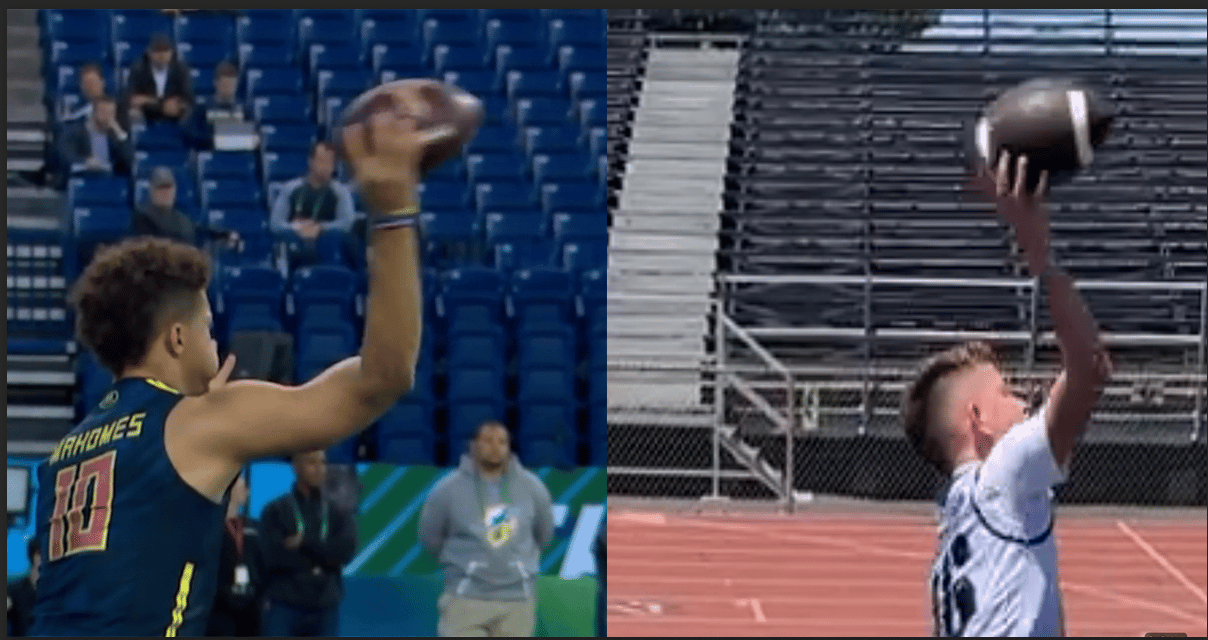
First we will go into the correct wrist position in comparison to incorrect wrist position when releasing the football. On the left is an example of the correct wrist position in the throwing arm, widely demonstrated by the late Dwayne Haskins who played for the Steelers. While on the right there is an example of an incorrect wrist position.
This is the most clear way you can see a neutral wrist position in compared to having a bent wrist at release. What is important to consider is all the steps necessary to get to the two different positions and the trajectory of the wrist and arm after release.
Loading The Arm
In order to throw a football further there are things to be avoided in the arm motion that causes weakness in the throw. We have talked about these extensively on our YouTube channel but we will briefly go over some critical throwing errors now.
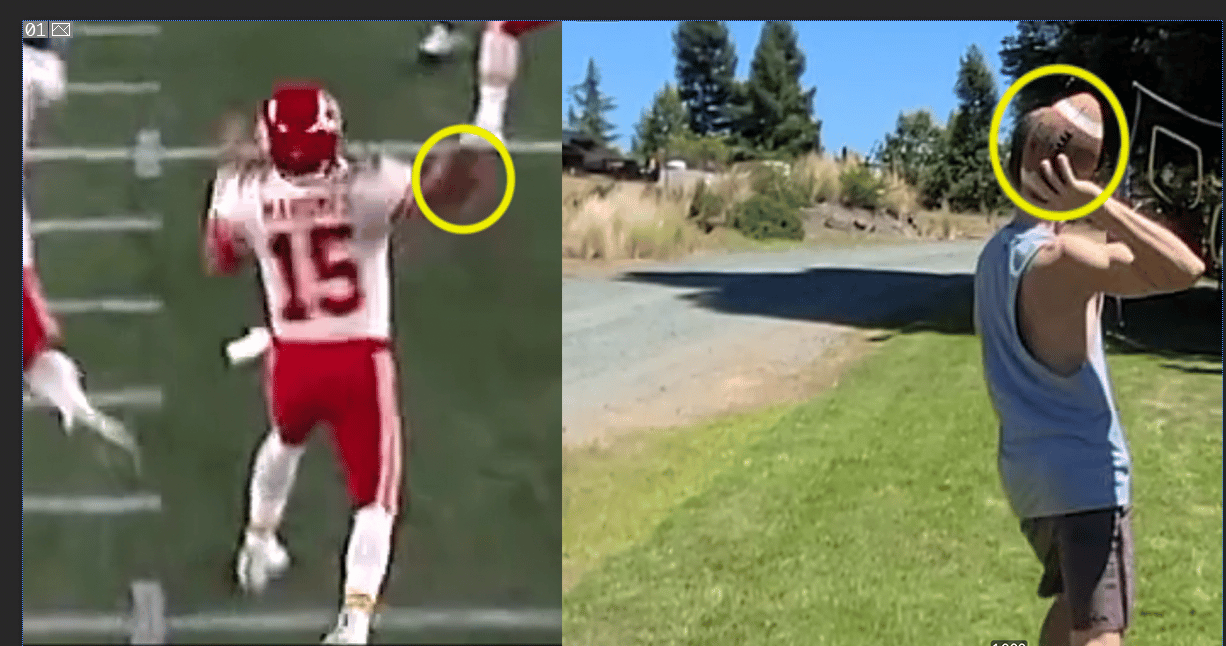
The most common mistake is the position of the ball. It is very important to build a consistent motion in the throwing arm. Most quarterbacks who struggle with arm strength also allow the ball to get too far back behind the head (picture right, above). No one says, “It’s just four interceptions.” Making these mistakes can lead to risky plays on the field.
While most NFL quarterbacks keep the ball away from the midline which is critical in generating speed in the throwing arm. In order to increase throwing distance, you must increase the ball speed during the load and this is one of the most effective ways to make that happen.
The Ball Should Face Back and Down, Not Out Or Up

The first action the football has when initiating the throw is a critical way in determining the distance the ball will travel. When correctly loading the football the shoulder will maintain a neutral position while an incorrect load will put the shoulder and scapula out of place. On the left above is Josh Allen loading for a deep ball.
While it is difficult to teach this specific load of the football he currently has the longest recorded throw in NFL history so it is not incorrect. The middle picture is of Aaron Rodgers, Green Bay Packers quarterback, where the wrist is in neutral, and the football is facing directly backwards. He is not throwing the ball deep here but it is still an excellent example of loading the football when playing quarterback. The last quarterback is loading the ball both away from the body as well as turning the nose of the football straight up in the air.
Generally when working with quarterbacks to improve their throwing mechanics when loading the football there are a couple key ‘do not’s’. If you ever want a chance to beat the record for the longest throw in NFL history, you will have to take these into account.
The Do Not’s Of The Load
-
Do not let the pinky finger go above the thumb.
-
Do not have the elbow get to shoulder height before the ball.
-
Don’t have the nose of the football point upwards or away from the body
-
Do not spend a lot of time with the lead foot in the air when stepping.
-
Do not let the front arm/shoulder fly open when loading for the throw.
Using The Lower Body To Throw the Ball
There are many quarterback coaches that argue the lower body is more important than the arm when throwing a football. There is definitely truth to that statement especially when adding more distance to the long ball. In this section we will go over some keys to better utilizing the legs and hips.
The Back Leg
How an athlete loads is critical not only when throwing a football but when doing a laundry list of athletic movements such as jumping, throwing a baseball, swinging a golf club, etc. We talked about loading in the upper body and now we will talk about the back foot. Understanding how to load the back foot is important for a quarterback to understand when throwing any type of pass but is especially true when throwing the ball deep.
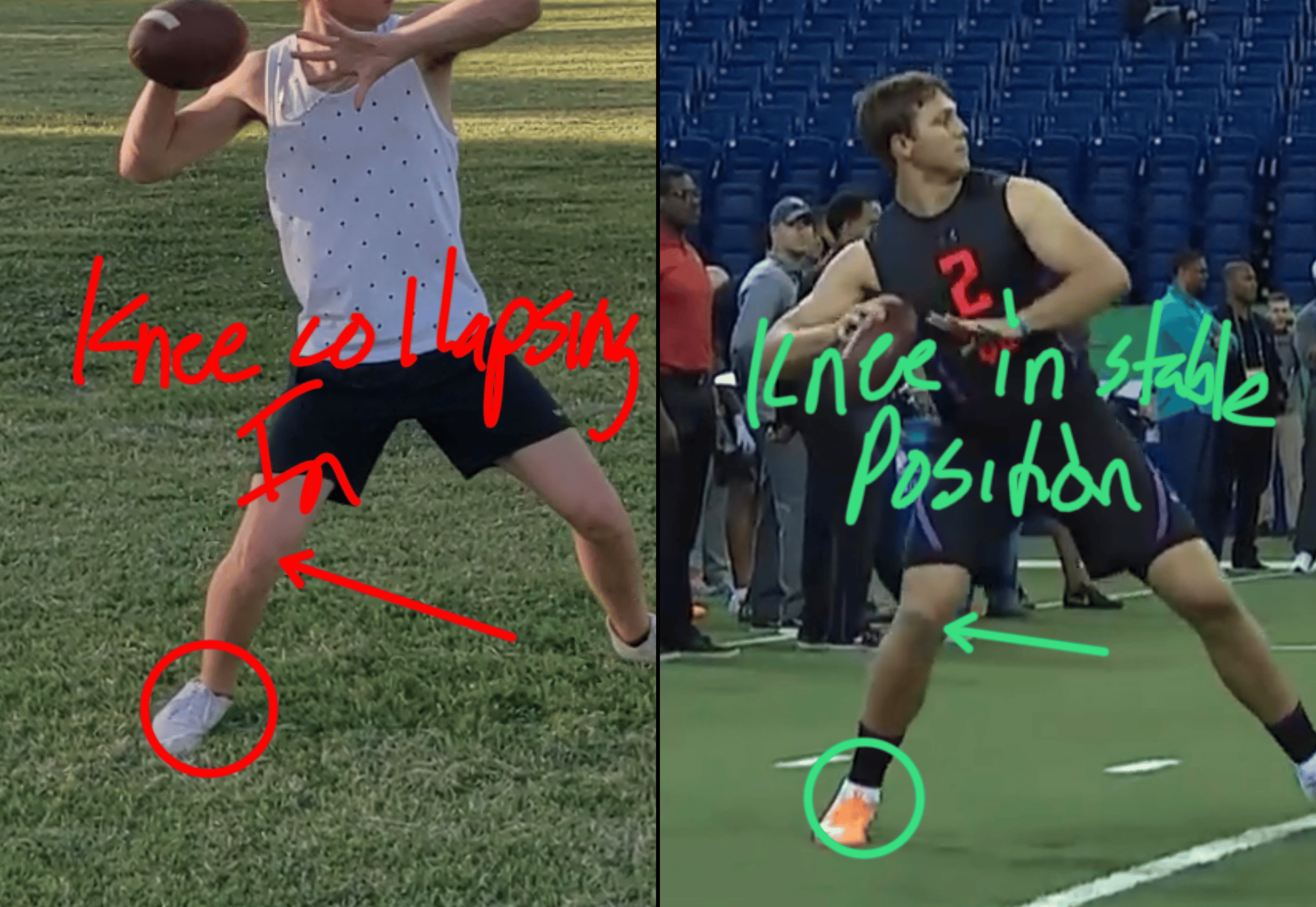
Probably the most important thing during the load would be making sure the back foot stays neutral or does not collapse inwards. When preparing to throw a football the first thing that should happen in the legs is the hips shift back as the knee bends. Keeping the weight on the back foot is critical as the lead foot is opening towards the pass catcher.
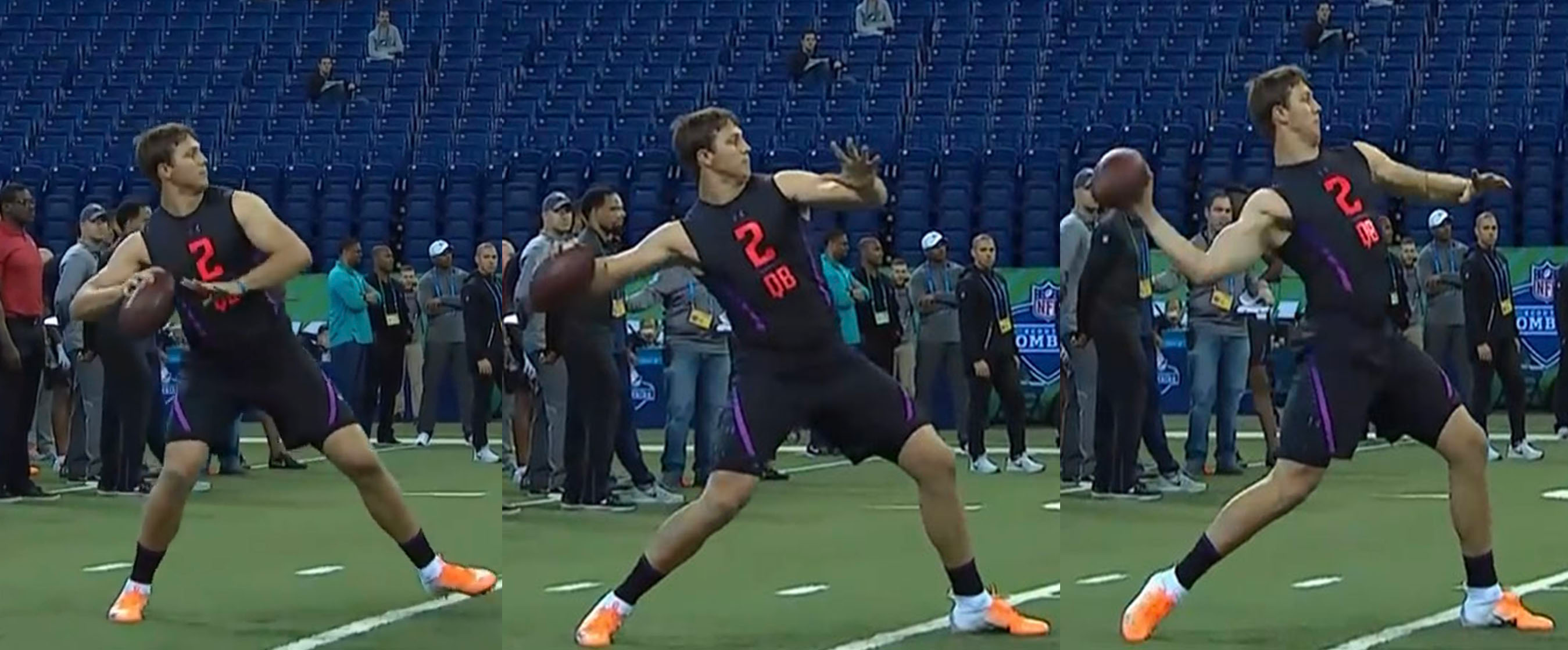
After the initial load the back foot very quickly begins to pivot to allow the hips to open up while the front shoulder stays back or retracted. This is what creates stretch in the core/spine and allows the arm and spine to rotate at it’s maximum speed. It is important to mention the importance of great flexibility through the hips and spine in order to achieve the correct angles to throw the ball far.
The Front Foot
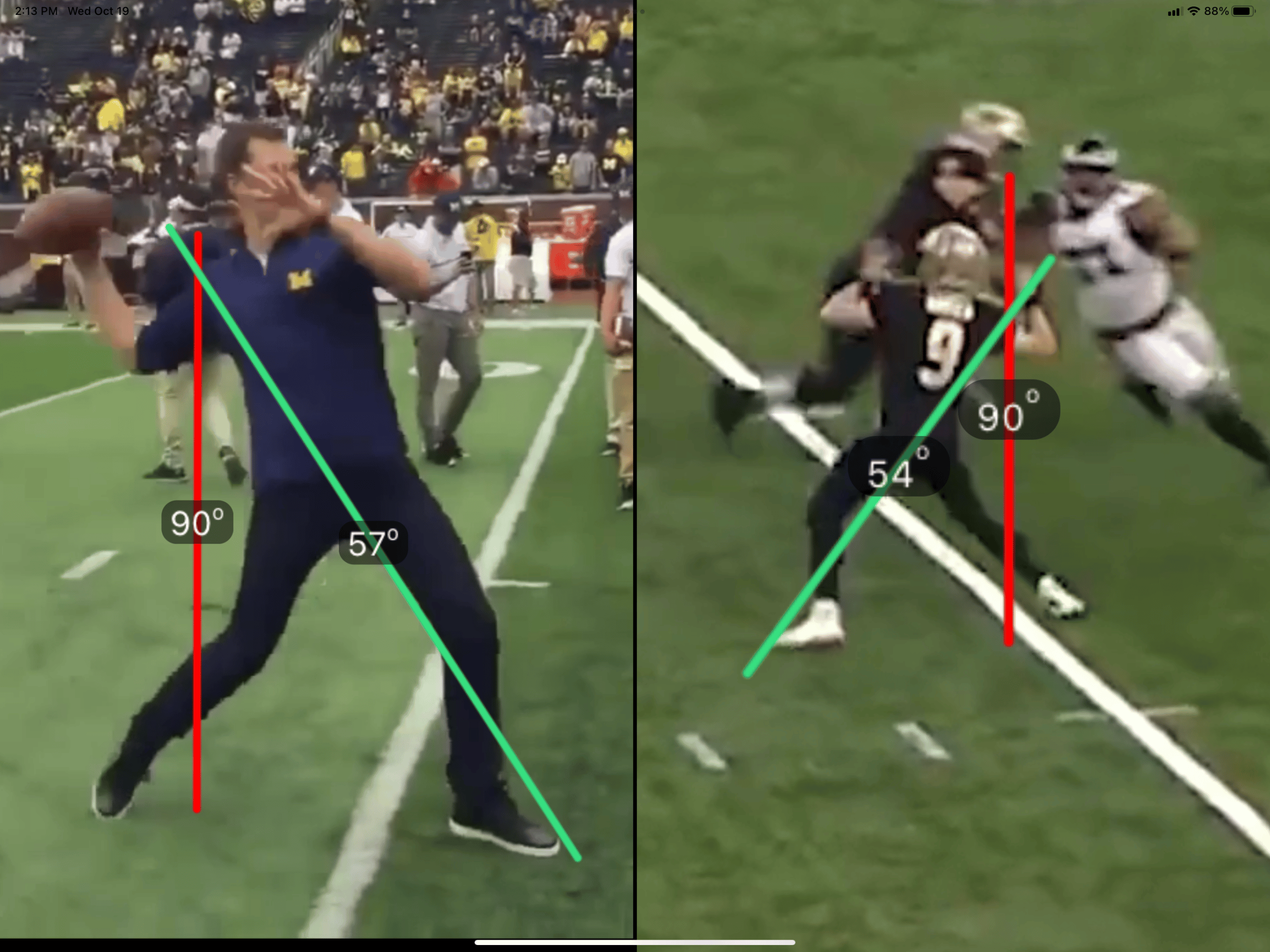
Now that the weight is shifting into the front foot it is important to not that the upper body or the spine should stay back. A common queue that I give is that the throwing shoulder should be as close to even with the back foot as possible. This will vary a bit with height as you can see above the difference between Tom Brady and Drew Brees where Tom is able to keep weight back a little more.
For most quarterbacks following the mechanics of Drew Brees should lead to a lot of improvements within the throw. The step forward should allow the feet to be more than shoulder width apart. Therefore, while the weight is shifting forward into the lead foot in the bottom half, the upper body stays back because the front shoulder is higher than the throwing arm.
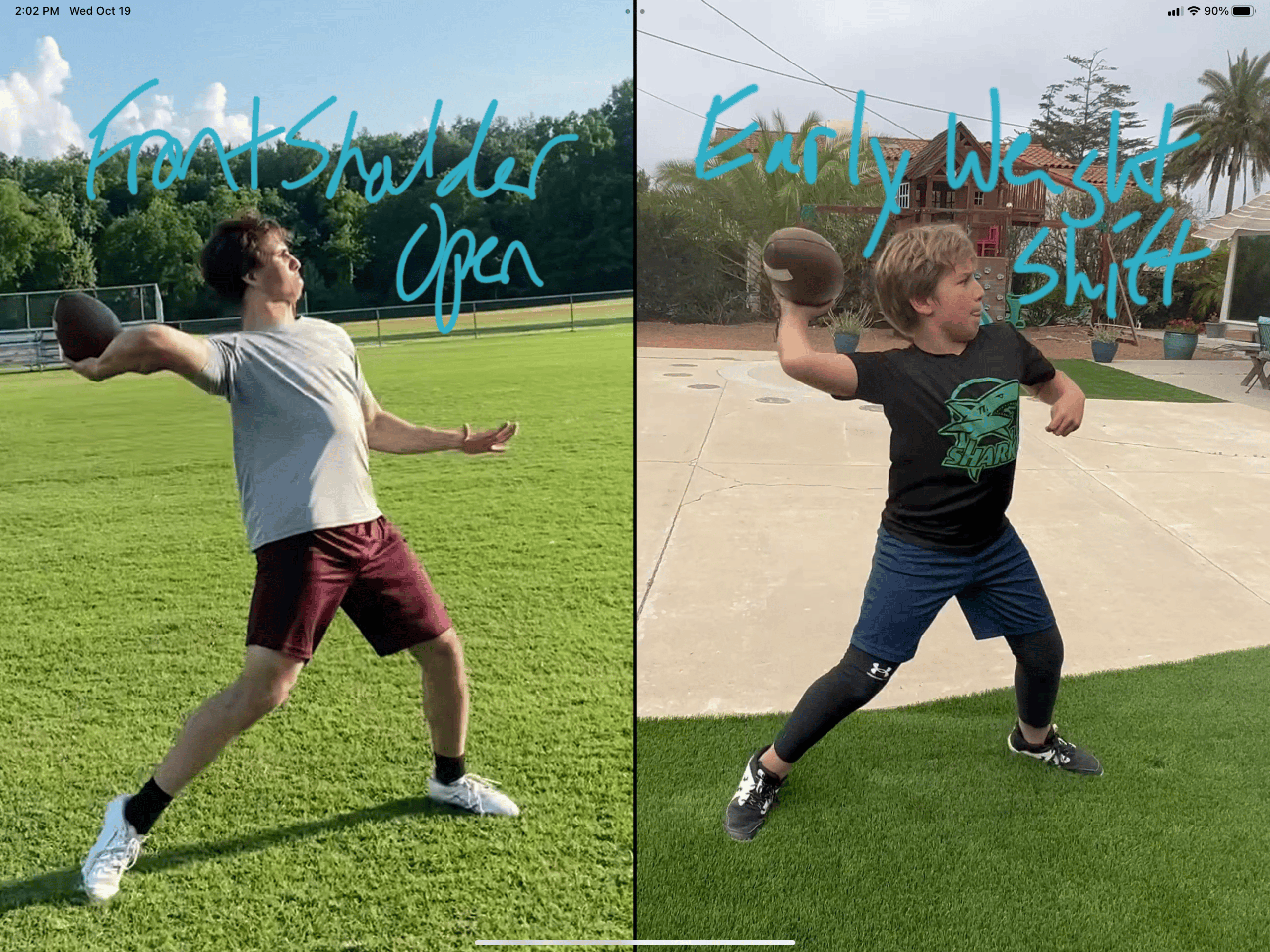
By keeping the upper body back it allows the quarterback to get more momentum into the throw. The most common mistakes we see when trying to throw a football far is opening up the front shoulder too soon and/or shifting all the weight forward too early. Quarterbacks with the strongest arm are able to have great timing in the upper and lower body. This means keeping the front shoulder closed and keeping the weight on the back foot as long as possible.
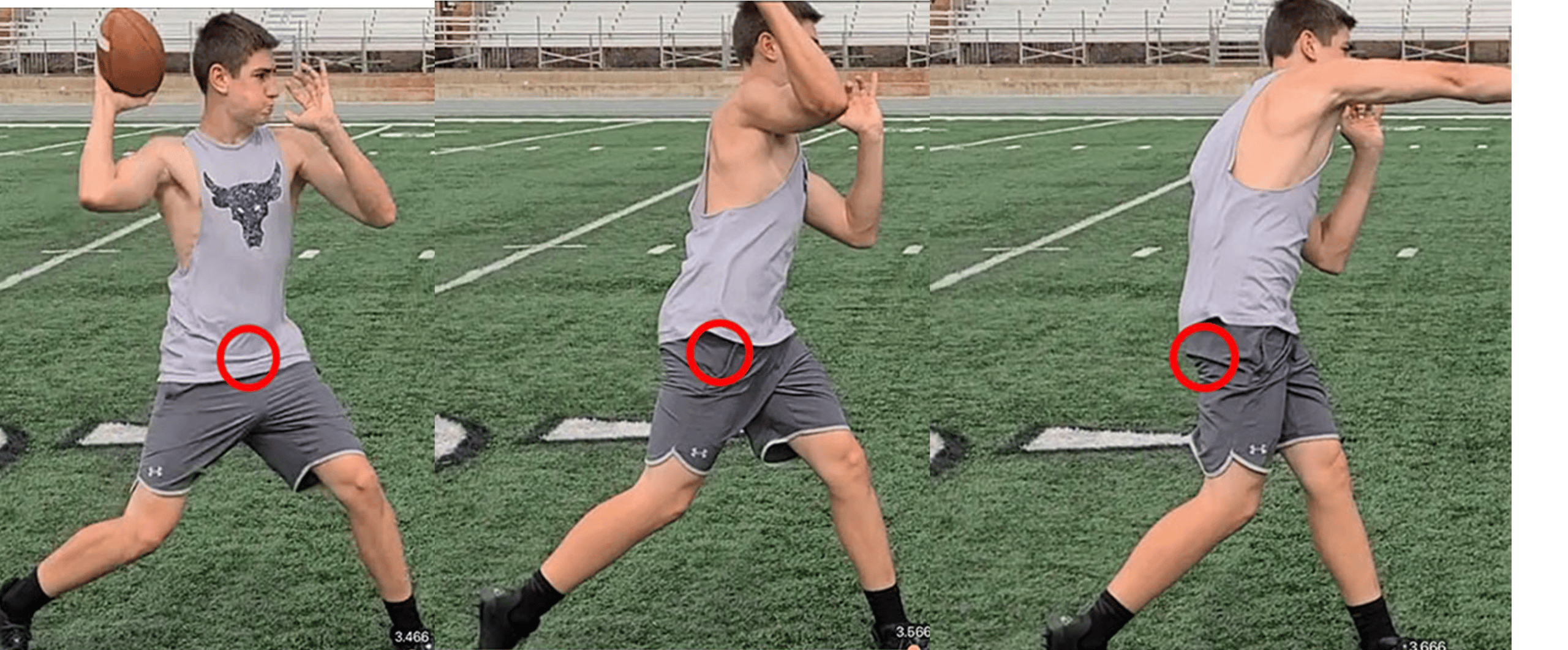
Now shifting the weight forwards into the lead foot is largely dependent on the base of the quarterback. When a quarterback has a great weight shift the hips are continuing to move forward throughout the throw. However, quarterbacks that struggle to throw a football far usually stop their weight shift very early into the throw. This can easily be seen by taking video of the throw from the side and tracking the hips as the ball is coming out of the hand.
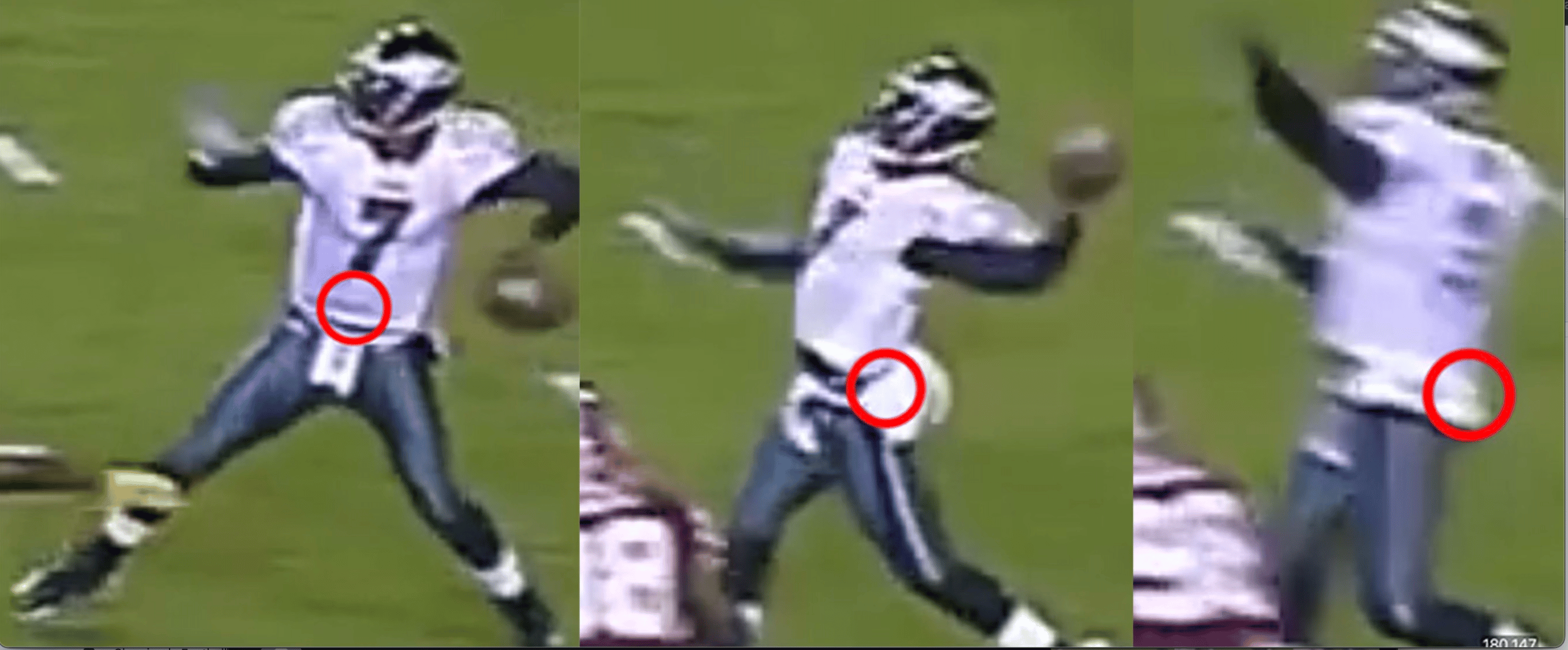
A lot of quarterbacks can greatly improve their throwing distance just by taking a greater step forward so they have a wider base. Having the feet wider than shoulder width gives more opportunity for the weight to shift forward during the throw. In the picture above we see Michael Vick taking a big stride as well as shifting a lot of weight forward during the throw. To show importance of the base and the weight shift during the long ball.
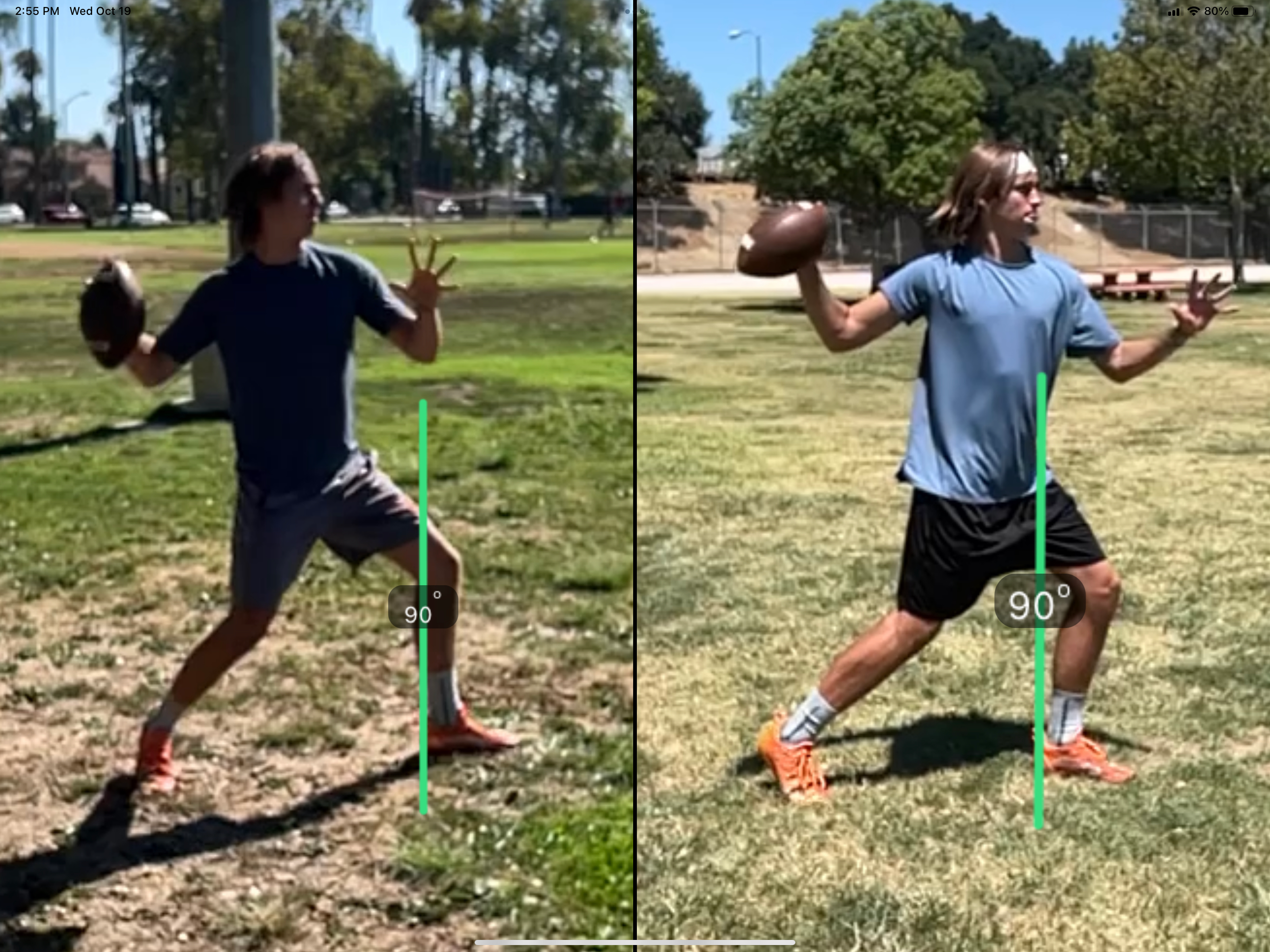
Many Quarterback coaches will over coach not ‘over striding’ which is when quarterbacks take a really long step forward when throwing the ball. While there is a point of limiting return when it comes to throwing distance a longer step forward is better.
The reason ‘over striding’ can be an issue is it impacts release time, but when the goal is to throw the ball far the release time is going to be longer. When the priority is having a quick release on the football field is when the throw is under 20-25 yards.
Lower Body Tips To Throw The Ball Far
When taking the initial step forward slightly opening up the foot so the lead foot is more open than the back foot will allow for more ability to shift the weight forward therefore increasing throwing power.
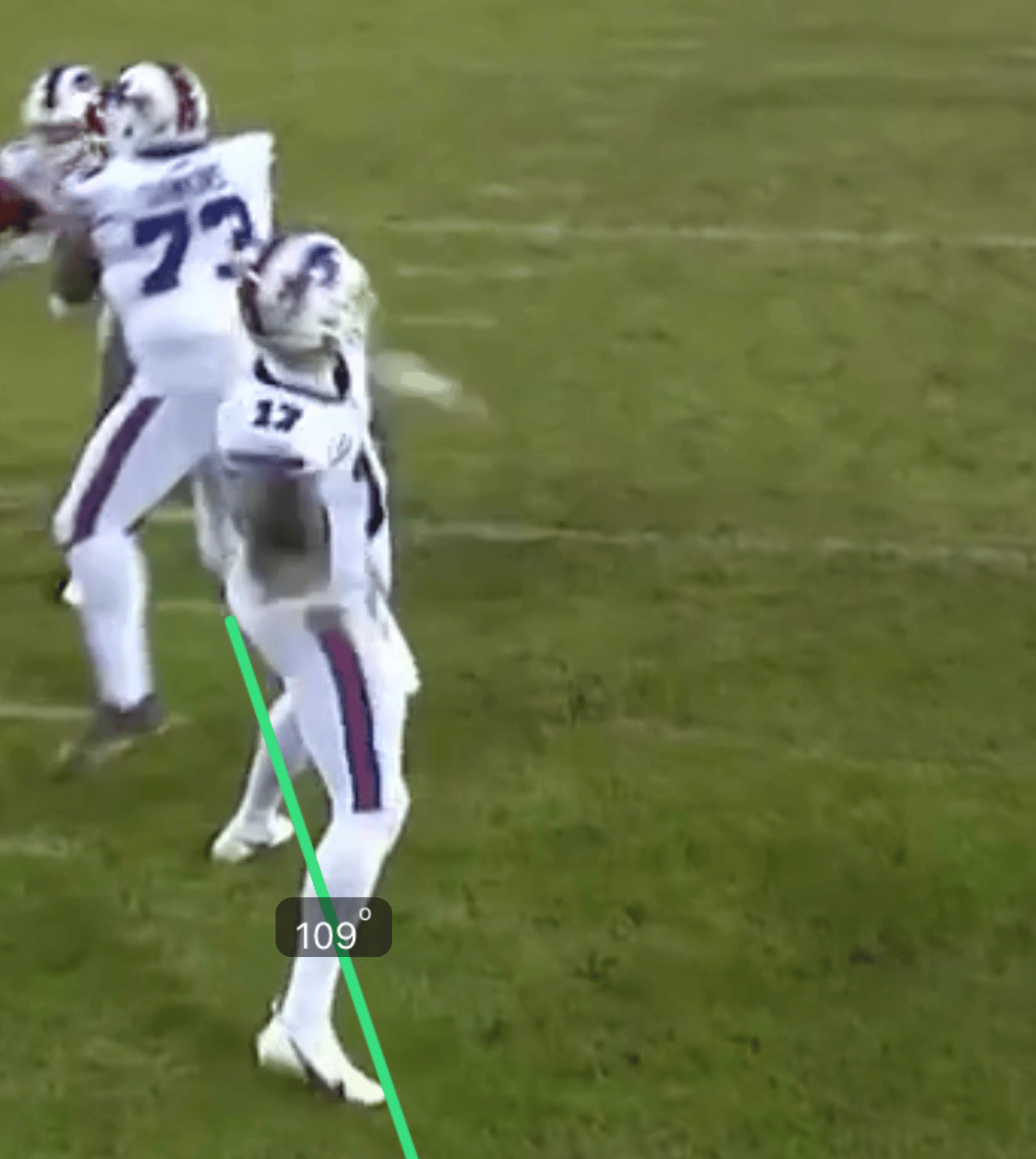
When initially loading into the back foot I recommend pressing down with the ball of the foot to generate more ground force into the throw.
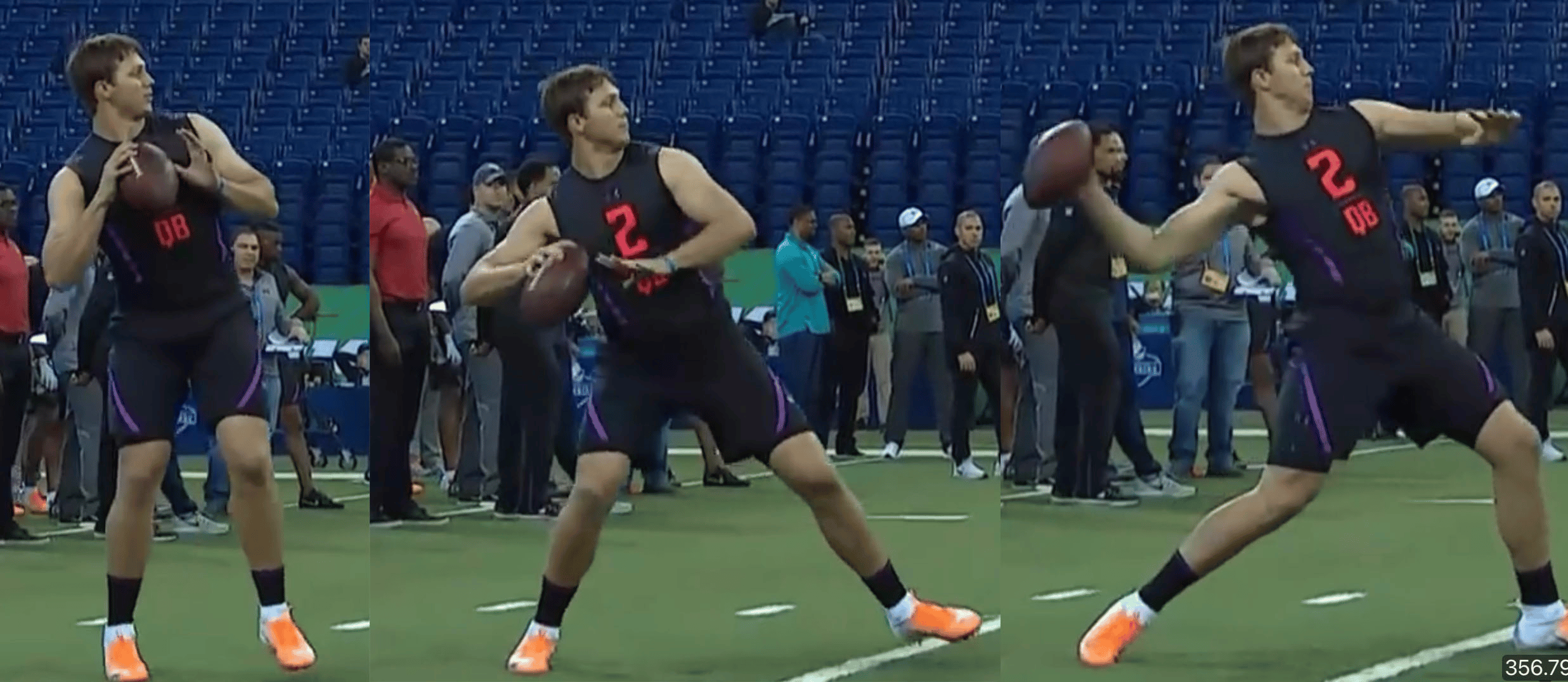
Keep the front knee bent as long as possible. The sooner the front knee extends the less ability the quarterback has of shifting weight into the front leg. Once the knee extends the forward momentum of the hips stop.
The weight should transition from the inside part of the foot to the outside part of the foot as the ball is being released. This is an important timing detail that can add an extra couple of yards to the distance of the throw.
Releasing The Football
How a quarterback releases the football is a critical separator from other quarterbacks. Understanding how to release the ball or how to flick the wrist makes a huge difference on how well the ball will spiral.
By getting a consistent perfect spiral in the football will add throwing velocity as well as distance to the quarterback’s abilities. When we see an NFL QB throw a deep ball, like Peyton Manning, in comparison to when seeing younger quarterback the thing that needs to change the most is the release.
Quarterbacks with great arm strength also have great wrist stability and positioning. Which means the wrist is neutral when the ball is coming out of their hand which gives way more power to the wrist and index finger. When the ball is able to have a tight spiral naturally it will be able to go further. Additionally, the timing from the feet up through the wrist are able to sync up more efficiently.
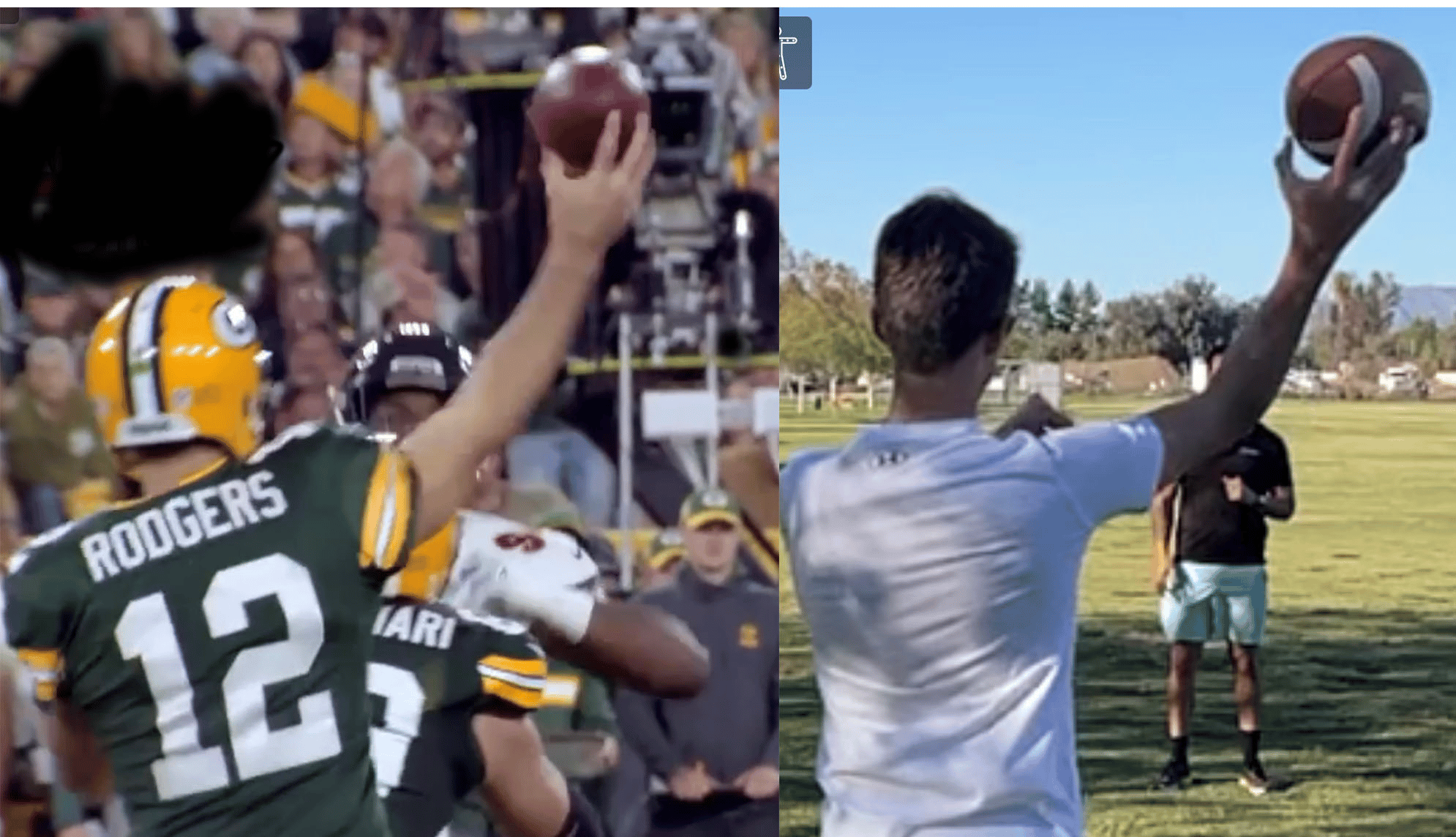
A lot of quarterbacks we work with talk about how there are able to make a good throw every once in awhile with a perfect spiral and great distance. However, when it happens there is no understanding of how it happened. All that they know is the ball went far or had a lot of velocity.
In order to throw a consistent great deep ball with a perfect spiral the quarterback has to understand wrist positioning and how to release the football. Here are examples to be able to better represent what it is I am talking about.
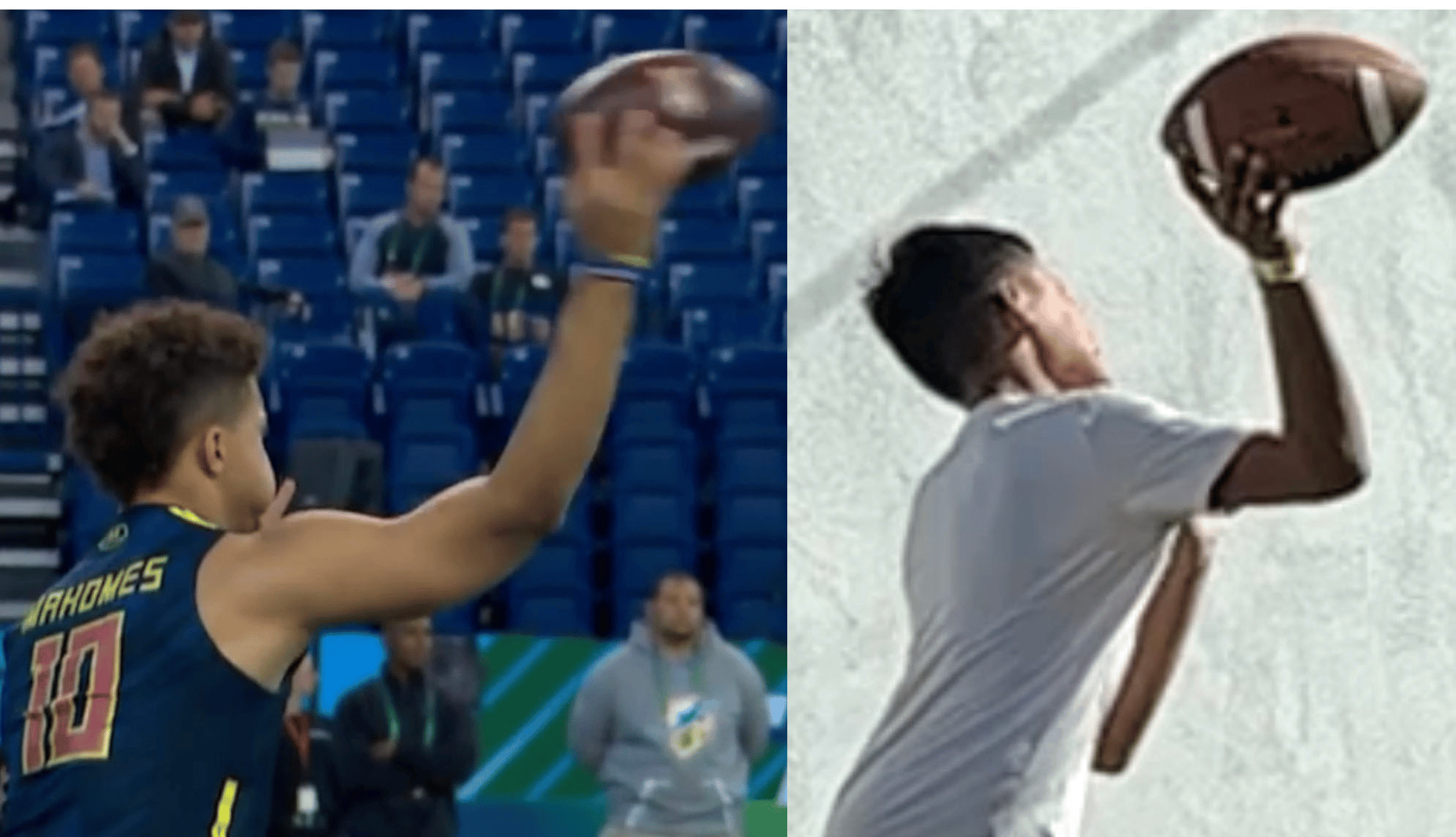
The Follow Through
This is a widely overlooked part of throwing the ball but it is also a very common part of the throw that leads to overuse injuries.
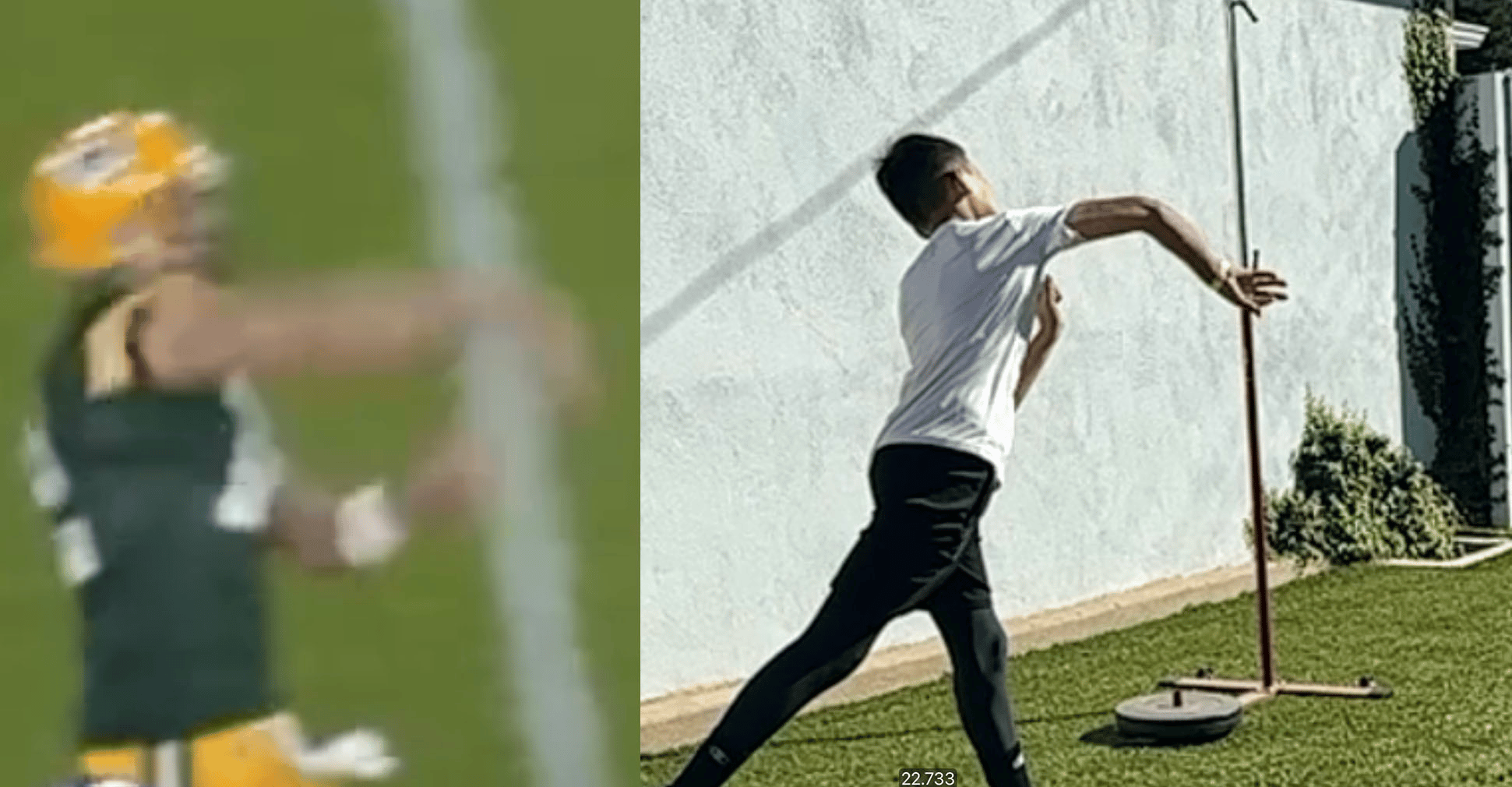
Typically what happens in quarterbacks who struggle to throw the ball far is the arm turns over quickly and the elbow ends up getting above the wrist during the follow through. This is a very big problem and causes overuse in the tricep and shoulder.
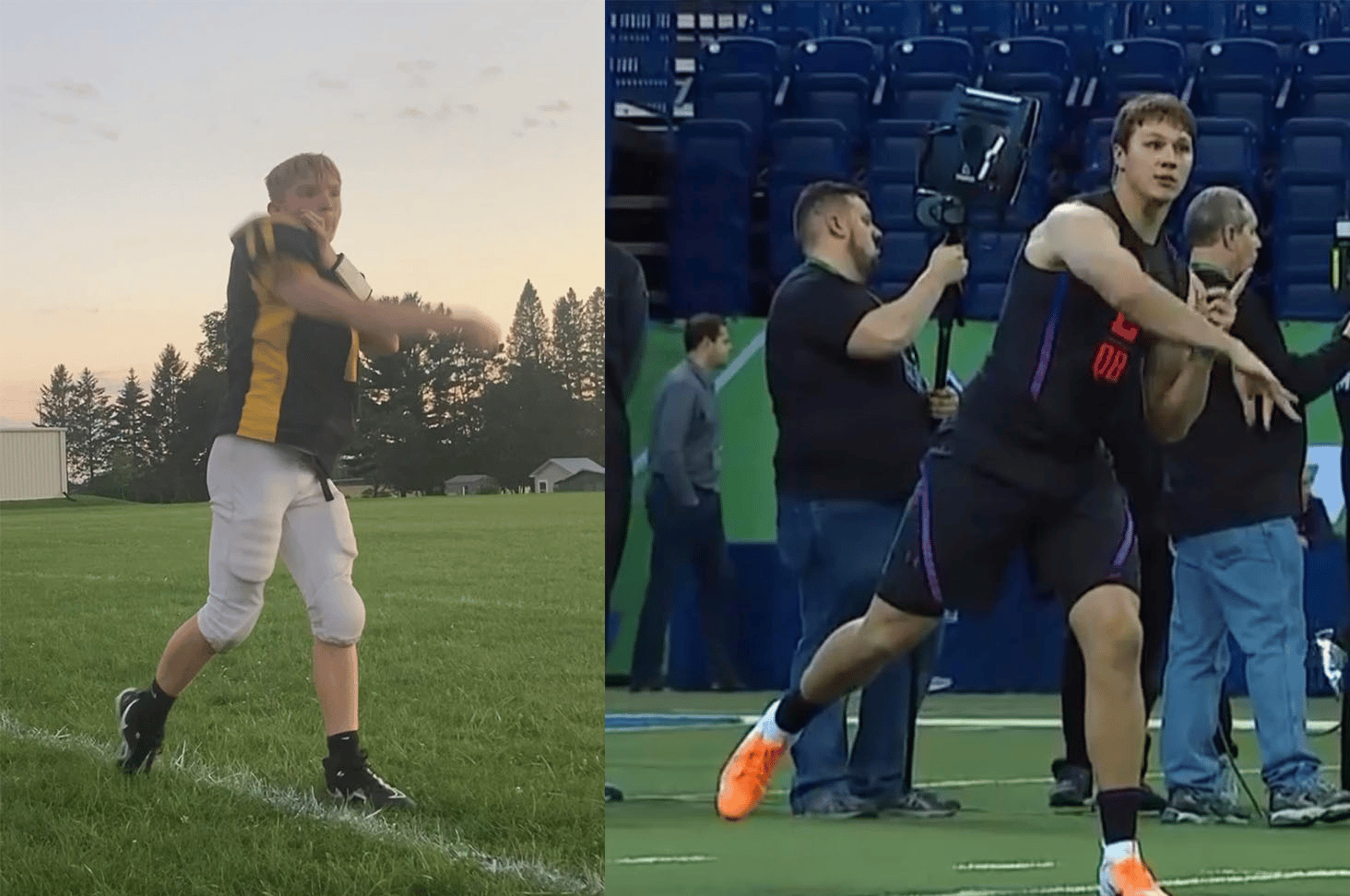
Additionally, there are quarterbacks who allow the arm to comes across their body after they release the ball. This puts a tremendous amount of stress on the front of the shoulder and can also throw the scapula out of place and cause back pain.
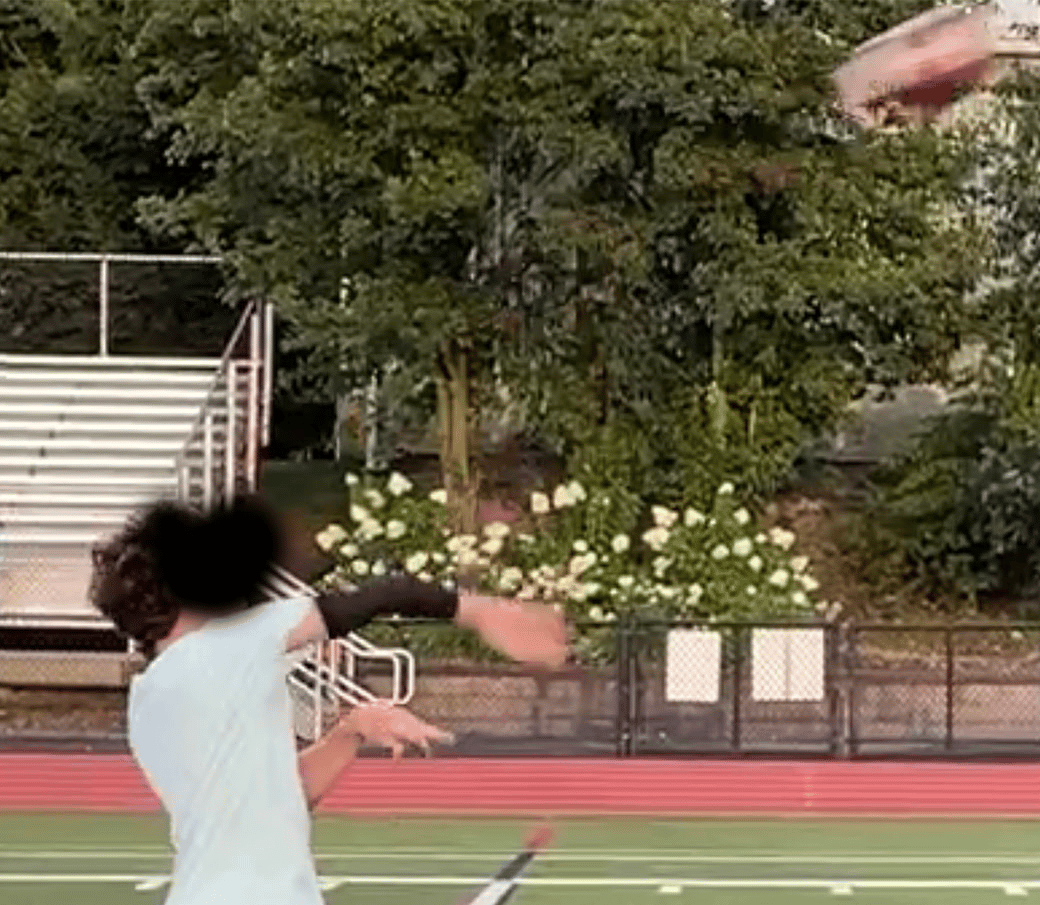
Another common mistake is when quarterbacks leave their hand or wrist high in the air after they throw the ball. Looks more like the release of a jump show than a quarterback release. This is really just not great for performance but could put additional stress on the shoulder and neck.
Conclusion
Thank you for reading this blog post and there is plenty more information on our website or on our YouTube channel if you want to learn more. Discover more on our video and channel here:
Our mission is to be able to provide the best most reliable information to athletes all over the world. To see how far we have come in 8 short years is extraordinary but we are certainly not complacent and would love to help you guys out any way that we can.
If there is anything more we can do to help do not hesitate to reach out either by sending us an email using the form below or by simply giving us a call, we are always here to help. The journey to improve throwing the ball takes time and consistency so do not expect to see immediate results. Instead rely on disciple and hard work in order to achieve whatever goal you are set out to accomplish.
All the best,
Morey Croson
Stay connected with news and updates!
Join our mailing list to receive the latest news and updates from our team.
Don't worry, your information will not be shared.
We hate SPAM. We will never sell your information, for any reason.

